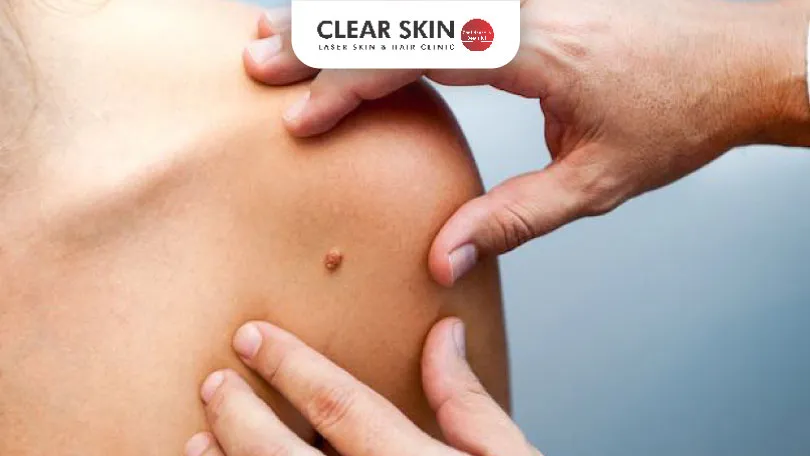7 Warning Signs of Skin Cancer You Shouldn’t Ignore
Reviewed By: ![]() Dr. Dhananjay Chavan
Dr. Dhananjay Chavan
Updated on: 26th May, 2024

In this blog, we will take a look at the condition itself, its causes, symptoms, and preventative measures.
As a leading center in dermatological care, we often receive numerous inquiries about skin cancer, a topic that merits serious discussion due to its complexity and the widespread misconceptions surrounding it. So we decided to come up with a detailed blog on the topic. In this blog, we will take a look at the condition itself, its causes, symptoms, and preventative measures.
Table Of Content
- What is Skin Cancer?
- Key Signs and Symptoms of Skin Cancer
- Causes of Skin Cancer
- Early Detection and Treatment
- Conclusion
What is Skin Cancer?
Skin cancer develops when skin cells begin to grow uncontrollably due to mutations often caused by sunlight exposure or inherited genetic factors. This common form of cancer varies widely in appearance, treatment options, and severity but shares the universal trait of potential danger if not identified and treated promptly.
Basal Cell Carcinoma (BCC)
Basal Cell Carcinoma represents the most frequently occurring type of skin cancer. It primarily affects body areas that are most exposed to the sun, such as the face and neck. Characteristically, BCC grows at a slow rate and is unlikely to spread to distant parts of the body, making it less threatening than other forms if treated early.
The typical presentation of BCC is a shiny bump or a flat, pinkish patch that might be mistaken for a regular skin blemish. However, its tendency to persist or grow slowly can be a key identifier.
Squamous Cell Carcinoma (SCC)
Next in terms of prevalence is Squamous Cell Carcinoma. This type of skin cancer commonly appears in sun-exposed regions like the ears, face, and back of the hands. SCC might look like rough, scaly patches or elevated growths that could have a central dip.
Unlike BCC, Squamous Cell Carcinoma has a higher tendency to spread to nearby tissues and requires prompt treatment. Early signs might include hard, reddish patches that develop into raised bumps. These can be tender to the touch and might bleed, prompting immediate medical evaluation.
Melanoma
Melanoma is the most aggressive and life-threatening form of skin cancer. It can start in or near a mole or other dark spot in the skin but can also appear suddenly on clear skin. The key to recognizing melanoma is to note changes in the size, shape, or colour of existing moles or spots.
Melanoma may spread much more quickly than BCC or SCC, reaching other parts of the body and causing serious health issues. It often appears as a dark spot with uneven borders that could be multiple colors like blue, black, or red. Because of its aggressive nature, any suspected melanoma should be checked by a dermatologist immediately.
Skin cancer: 7 signs that should not be ignored
Key Signs and Symptoms of Skin Cancer
- New Moles or Spots: Any new moles or spots on your skin should be checked, especially if they change in size, shape, or colour over time. These changes can indicate melanoma, the most dangerous type of skin cancer.
- Non-healing Sores: Sores that don’t heal within a few weeks might be a sign of skin cancer. This includes areas that are scaly, bleed, or have a crust.
- Odd Moles: Be vigilant about asymmetrical moles, that have irregular borders, or contain multiple colours. These features can suggest a malignant change.
- Itchy or Bleeding Moles: Moles that itch, bleed, or cause pain are alarming signs and should prompt a consultation with a dermatologist.
- Painful Lesions: Painful lesions that form a lump on your skin can be a warning sign of squamous cell carcinoma.
- Change in Sensation: Any change in sensation, such as tenderness or a feeling of itchiness over a particular area, can be a subtle sign of skin cancer.
- Red Patches: Flat, red areas that might be slightly scaly could indicate the early stages of squamous cell carcinoma, particularly if they persist or worsen over time.
Causes of Skin Cancer
Sun Exposure
UV radiation from the sun is the primary cause of skin cancer, damaging the DNA in skin cells. Protective measures such as wearing sunscreen can significantly reduce risk.
Genetics
Individuals with a family history of skin cancer are at higher risk. Genetic predisposition plays a crucial role in the likelihood of developing skin cancer.
Prevention Tips
- Sun Protection: Always use sunscreen, whether you are outdoors in the sun or indoors. Cover exposed skin with protective clothing and seek shade when the sun’s rays are strongest.
- Regular Skin Checks: Perform self-examinations of your skin regularly to detect any new changes or growths early. If you notice any changes, schedule an appointment with a dermatologist.
- Avoid Tanning Beds: Tanning beds emit UV rays that can increase your risk of skin cancer. Opt for safer alternatives like self-tanning products.
Early Detection and Treatment
Early detection of skin cancer significantly improves the likelihood of successful treatment. By following these structured steps, you can take charge of your skin health and spot potential issues before they develop into serious problems.
Self Examination
Conducting a self-examination of your skin every month is an effective way to catch early signs of skin cancer. Start by examining your entire body, including areas that aren’t regularly exposed to the sun. Use a mirror to check hard-to-see places or ask a family member to help. Look specifically for new growths or any changes in the color, size, or shape of existing moles and spots.
If you notice anything unusual, make a note of it and monitor any changes regularly. A good technique is to follow the ABCDE rule for moles: watch for Asymmetry, irregular Borders, uneven Color, Diameter greater than a pencil eraser, and Evolving characteristics.
Dermatological Consultations
Regular dermatological check-ups are essential, particularly for individuals who have a personal or family history of skin cancer or who have had significant sun exposure over their lifetime. During a visit, your Care Skin Clinic will do a full-body skin exam to identify any suspicious areas that might need further testing.
These check-ups serve not only to spot early signs of skin cancer but also to track any changes in your skin over time. It’s recommended to see a dermatologist at least once a year, but you may need to visit more frequently if you’re at higher risk.
Biopsy Procedures
If during a self-exam or a professional check-up, a suspicious area on your skin is identified, your dermatologist might decide to take a small sample of the skin for further analysis, a process known as a biopsy. This minor procedure is crucial for determining whether a spot is cancerous. There are several types of biopsies, and the method used depends largely on the type of skin lesion present.
For instance, a shave biopsy involves removing the upper layers of skin with a small blade, while a punch biopsy removes a deeper section with a circular tool. After the biopsy, the sample is sent to a lab where a pathologist examines it under a microscope to detect the presence of cancer cells.
Do You Know?
Roughly 250 Patients Are Treated
Everyday By These Dermatologists
(You are one click away from flawless skin)
Meet Our Dermatologist!
Conclusion
Further Reading
Does Laser Work on Scars?
Explore effective laser scar treatments like PRP, microneedling, and CO2 laser at Clearskin Clinic Pune for smoother skin and improved texture.
Cost of Laser Hair Reduction
Explore the benefits, cost factors, and advanced technologies in laser hair reduction. Visit Clear Skin Clinic Pune for expert treatments and smoother skin.
Can you Control Oily Skin?
Find out if coffee causes acne & how it affects your skin. Talk to the experts at Clear Skin Clinic in Pune for personalized acne treatment.
Coffee and Acne: Uncovering the Truth Behind the Breakouts
Find out if coffee causes acne & how it affects your skin. Talk to the experts at Clear Skin Clinic in Pune for personalized acne treatment.
Have thoughts? Please let us know
We are committed not only to treating you, but also educating you.






